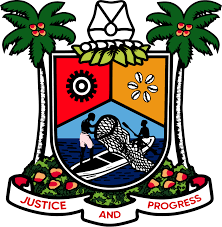
NiMET warns of cholera outbreaks and forecasts heavy rainfall.
Given the predicted high levels of rainfall and flooding in 2025, the Nigerian Meteorological Agency has issued a warning about the potential for epidemics of cholera and other watery diseases in a number of states.
NiMET named Lagos, the Federal Capital Territory, Kaduna, Ebonyi, Cross River, Abia, and Akwa Ibom as the states most at danger in its 2025 Seasonal Climate Prediction, which was made public on Monday. This is especially true in places that are prone to flooding and have inadequate sanitation.
The organization said that rising sea temperatures, storm surges, and rainfall might lead to more flooding and a higher risk of water-related illnesses in the nation's coastal regions.
It cautioned that flooding may make cholera more likely to spread, especially in areas where open defecation is common. It also noted that fecal contamination of water supplies during floods is a serious public health concern.
Due to shifting climatic trends, NiMET also warned of possible increases in meningitis, malaria, and heat-related diseases like heatstroke, dehydration, and respiratory issues.
According to the EPA, even in places where near-normal precipitation is predicted, flash flooding might occur from heavy rainfall.
In addition to increasing the danger of malaria, heavy rains can contaminate sources of drinking water, increasing the risk of waterborne illnesses such cholera, dysentery, and diarrhea.
The paper also pointed out that because wet circumstances promote fungal growth, they are likely to cause a rise in respiratory illnesses.
Flooding-related infrastructure damage and displacement may potentially affect access to healthcare.
According to NiMET, the regions with the most rainy days in 2025—Lagos, Delta, Bayelsa, Cross River, Rivers, and Akwa Ibom—would have between 250 and 290 days.
There will probably be 200–250 rainy days in a second tier of states, which include Ogun, Oyo, Ekiti, Osun, Ebonyi, Anambra, and Enugu.
There may be 150–200 rainy days in central states including Niger, Kogi, Benue, Plateau, Nasarawa, Kwara, and the Federal Capital Territory.
110 to 150 rainy days are predicted for Sokoto, Katsina, Zamfara, Kano, Jigawa, Yobe, and Borno in the north.
It is anticipated that the year's total rainfall will vary from 3,010 mm at the coast to 405 mm in the far north.
Kaduna, Ebonyi, Cross River, Lagos, Abia, Akwa Ibom, and the Federal Capital Territory are anticipated to get above-normal rainfall, while the majority of the country will see normal to below-normal rainfall in comparison to long-term trends.
In southern states like Lagos, Ogun, Ondo, Ekiti, Edo, Cross River, Enugu, Ebonyi, Imo, Abia, and Anambra, the rainy season is predicted to begin between March and April.
Rainfall is expected to start in the central belt, which includes the FCT, Niger, Kwara, Kogi, Benue, Plateau, Nasarawa, and Taraba, between April and May.
It is predicted to begin in early June or early July in northern states including as Sokoto, Zamfara, Katsina, Kano, Jigawa, Bauchi, Yobe, and Borno.
It is anticipated that Delta, Bayelsa, Rivers, Anambra, and portions of Oyo, Ogun, Osun, Ondo, Lagos, Edo, Enugu, Imo, and Ebonyi states would see an early beginning, while Plateau, Kaduna, Niger, Benue, Nasarawa, Taraba, Adamawa, and Kwara states may experience a delayed onset.
Normal onset dates are anticipated for the remainder of the nation.
In areas of Oyo State, such as Saki, Iseyin, Ogbomosho, Atisbo, Orelope, Itesiwaju, Olorunsogo, Kajola, Iwajowa, and Ori Ire, NiMET issued a warning about extreme dry spells that would last more than 15 days.
Ekiti, Osun, Ondo, Ogun, Edo, Ebonyi, Anambra, Imo, Abia, Cross River, Delta, Bayelsa, and Akwa Ibom may have a mild dry spell that lasts up to 15 days.
A severe dry spell lasting up to 21 days is anticipated for the northern states between June and August, when the rainy season is at its height.
According to the agency's projections, the country's 2025 rainy season will conclude between October 6 and December 17. Rainfall is predicted to start to decline in the northern states during the first week of October and then progressively move southward.
The season is predicted to expire in early to late October in the country's northern regions, early November in the central states, and mid-December in the southern coastal regions.





